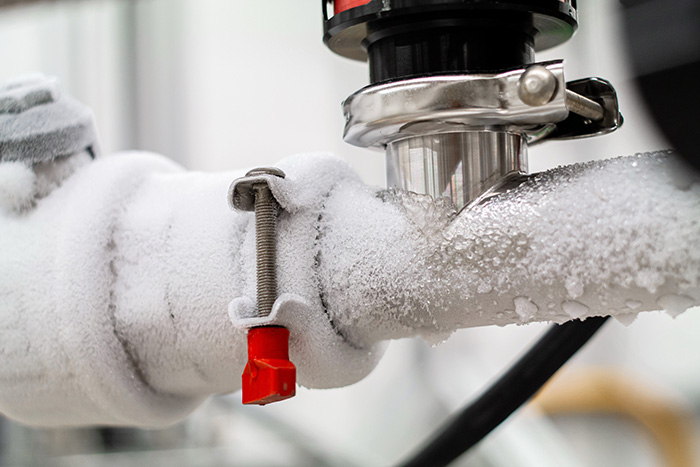How to Protect Plumbing System from Cold Weather: Critical Advice
How to Protect Plumbing System from Cold Weather: Critical Advice
Blog Article
Just about everyone may have their own unique theory with regards to How to Prevent Your Pipes From Freezing.

Cold weather can ruin your plumbing, especially by freezing pipes. Below's how to avoid it from occurring and what to do if it does.
Intro
As temperatures decline, the risk of frozen pipes boosts, potentially causing costly repair services and water damage. Recognizing just how to avoid frozen pipes is vital for house owners in cool climates.
Comprehending Icy Pipelines
What creates pipes to freeze?
Pipes ice up when exposed to temperatures listed below 32 ° F (0 ° C) for prolonged periods. As water inside the pipelines freezes, it broadens, putting pressure on the pipeline walls and potentially triggering them to burst.
Risks and damages
Frozen pipes can cause water system interruptions, property damage, and costly fixings. Burst pipes can flood homes and cause considerable architectural damage.
Signs of Frozen Piping
Determining icy pipelines early can avoid them from rupturing.
Just how to determine icy pipelines
Look for lowered water flow from taps, unusual smells or noises from pipes, and noticeable frost on subjected pipelines.
Avoidance Tips
Protecting at risk pipes
Cover pipelines in insulation sleeves or use warm tape to shield them from freezing temperatures. Focus on pipes in unheated or outside locations of the home.
Home heating techniques
Keep interior areas adequately heated up, particularly locations with pipes. Open up closet doors to allow warm air to circulate around pipes under sinks.
Protecting Outdoor Plumbing
Garden hoses and outside taps
Detach and drain garden hoses prior to winter months. Mount frost-proof spigots or cover outdoor faucets with shielded caps.
What to Do If Your Pipes Freeze
Immediate activities to take
If you believe icy pipes, maintain faucets open to relieve stress as the ice thaws. Use a hairdryer or towels taken in hot water to thaw pipelines slowly.
Long-Term Solutions
Structural modifications
Consider rerouting pipelines far from exterior wall surfaces or unheated areas. Add additional insulation to attics, cellars, and crawl spaces.
Updating insulation
Buy high-grade insulation for pipelines, attics, and walls. Proper insulation aids maintain constant temperature levels and decreases the threat of frozen pipes.
Final thought
Preventing frozen pipes requires positive procedures and fast responses. By understanding the causes, indications, and safety nets, house owners can protect their plumbing during cold weather.
5 Ways to Prevent Frozen Pipes
Drain Outdoor Faucets and Disconnect Hoses
First, close the shut-off valve that controls the flow of water in the pipe to your outdoor faucet. Then, head outside to disconnect and drain your hose and open the outdoor faucet to allow the water to completely drain out of the line. Turn off the faucet when done. Finally, head back to the shut-off valve and drain the remaining water inside the pipe into a bucket or container. Additionally, if you have a home irrigation system, you should consider hiring an expert to clear the system of water each year.
Insulate Pipes
One of the best and most cost-effective methods for preventing frozen water pipes is to wrap your pipes with insulation. This is especially important for areas in your home that aren’t exposed to heat, such as an attic. We suggest using foam sleeves, which can typically be found at your local hardware store.
Keep Heat Running at 65
Your pipes are located inside your walls, and the temperature there is much colder than the rest of the house. To prevent your pipes from freezing, The Insurance Information Institute suggests that you keep your home heated to at least 65 degrees, even when traveling. You may want to invest in smart devices that can keep an eye on the temperature in your home while you’re away.
Leave Water Dripping
Moving water — even a small trickle — can prevent ice from forming inside your pipes. When freezing temps are imminent, start a drip of water from all faucets that serve exposed pipes. Leaving a few faucets running will also help relieve pressure inside the pipes and help prevent a rupture if the water inside freezes.
Open Cupboard Doors
Warm your kitchen and bathroom pipes by opening cupboards and vanities. You should also leave your interior doors ajar to help warm air circulate evenly throughout your home.

I was made aware of that article on How To Avoid Freezing Pipes through a friend on our other web page. For those who enjoyed reading our post please be sure to share it. Thanks for your time. Don't forget to visit our blog back soon.
Book A Service Call Report this page